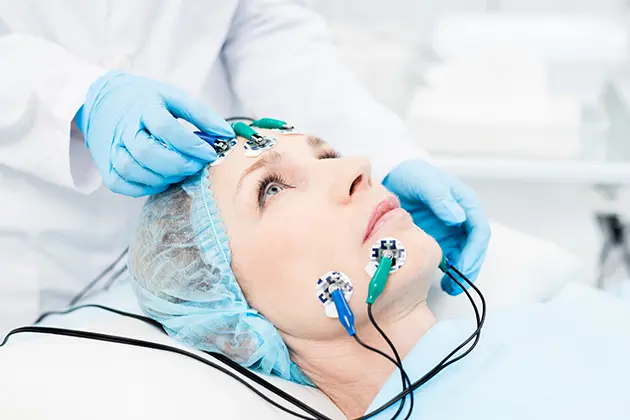Ultrasonic rhinoplasty is a safe procedure that lowers risks and side effects while shortening recovery times for facial plastic surgery procedures. Before and postoperative instructions must be carefully adhered to – including ceasing medicines that increase bleeding or smoking which could slow healing times – in order for this process to go as smoothly as possible.
It is a minimally invasive procedure
Ultrasound technology enables surgeons to sculpt noses with greater precision and less tissue damage, as well as reduced swelling and bruising after surgery. It can be performed under either local or twilight anesthesia; most patients report experiencing minimal pain afterward.
Piezo therapy can address a wide variety of nasal issues, from reducing hump to reshaping the nasal tip. Additionally, this procedure may also be useful for correcting deviated septum and breathing issues; or by helping balance out proportions on both sides of the nose for improved facial harmony.
Ultrasonic rhinoplasty patients must be in good general health and without serious medical concerns that could impede surgery or recovery, including non-smokers with realistic expectations of what the surgery can achieve and any medications such as aspirin that could slow healing processes. To be eligible for the procedure, patients must also avoid smoking.
It is safe
Ultrasonic rhinoplasty is a safe surgical procedure that employs sound waves to reshape the nose. Surgeons using this approach are able to achieve excellent results with less trauma, including reduced swelling and bruising. Plus, manual tools like chisels or rasps won’t damage as easily to delicate tissues of the nose!
Piezotome utilizes micro-vibrations similar to an electric toothbrush or micro-saw, yet much more precise. This allows surgeons to precisely shape nasal bone and cartilage without damaging surrounding tissues.
Patients seeking this procedure should be in excellent overall health with no preexisting medical conditions that would compromise surgery or recovery, and be at an age when nasal growth has concluded, typically 18 or 20 for women and 21 for men respectively. Furthermore, non-smokers or those willing to quit smoking as it impedes healing should have realistic expectations about desired results and have realistic expectations about surgery results.
It is effective
Ultrasound rhinoplasty surgery can provide an efficient and cost-effective means of shaping nose bones precisely, eliminating nasal hump or correcting other cosmetic concerns. Furthermore, ultrasound rhinoplasty surgery may even help improve breathing issues caused by structural anomalies in the nose.
Piezoelectric inserts have the power to cut through nasal skin and cartilage without harming soft tissues such as internal mucosa or other soft tissues, minimizing postoperative discomfort while eliminating radiating fracture lines seen with traditional instruments.
However, this technique requires extensive specialized training and experience with piezoelectric equipment that may not be comfortable for every surgeon. Furthermore, many surgeons prefer established techniques they have honed over years of practice.
Candidates for rhinoplasty surgery should be in good overall health with realistic expectations about their surgical results. Nonsmokers or those willing to quit smoking are strongly recommended, as smoking can hinder healing and increase complications during recovery. It is also crucial that candidates reach an age when their nasal growth has concluded before proceeding with the process.
It is affordable
Ultrasonic rhinoplasty utilizes a device that emits soundwaves to change the shape of nasal bones and cartilage more precisely. This technique is less invasive than traditional rhinoplasty, with reduced swelling, bleeding and scarring while also shortening recovery time significantly.
This procedure can be beneficial for patients suffering from issues pertaining to their nose, such as crookedness or deviated septum deviation, as well as for those who desire larger noses but want them reshaped into something more proportionate; additionally, this technique may address issues caused by previous surgeries.
Candidates for this procedure should be in good general health without any underlying conditions that could complicate surgery or recovery, and have realistic expectations about what can be accomplished through this form of surgery. Mild bruising and swelling post-surgery is normal and should subside within weeks; anyone interested should meet with an experienced surgeon to discuss all their available treatment options.










